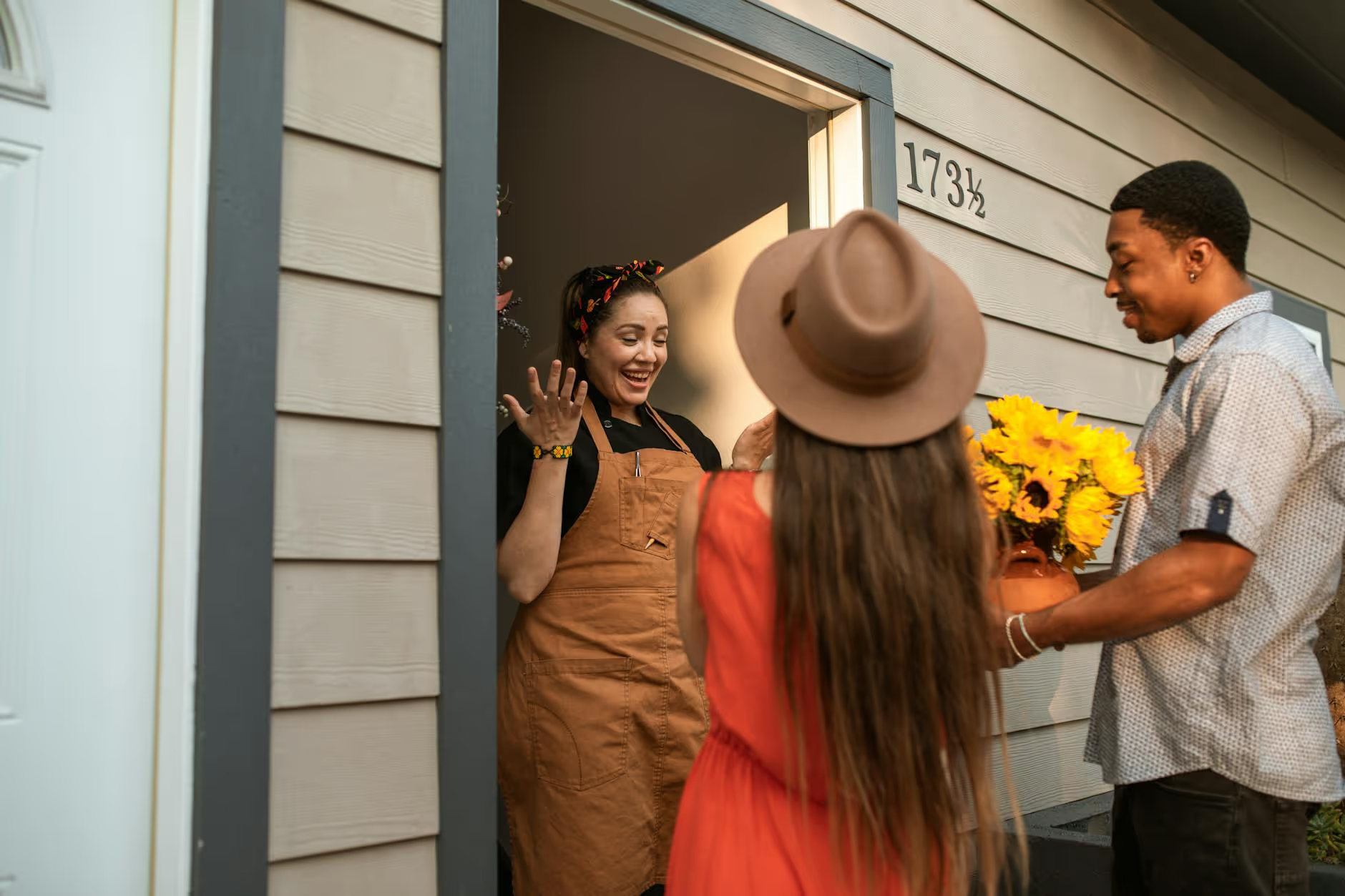How to Help a Loved One Adjust to a Long-Term Care Facility
April 22, 2025
Supporting Transition: Guiding Loved Ones into Long-Term Care


Navigating the Path to a New Home for Your Loved One
Moving a loved one into a long-term care facility marks a significant life transition that can evoke a broad spectrum of emotions for both family members and residents. This process involves more than logistical planning; it encompasses emotional support, personalized care, and fostering a sense of community. Proper preparation, open communication, and active involvement can ease these challenges, turning the move into an opportunity for renewed connections and improved quality of life.
Preparing for the Move: Laying the Foundation for a Smooth Transition

What practical steps can families take to prepare for and manage the emotional challenges of relocating a loved one to a care facility?
Moving a loved one to a long-term care facility is a significant transition that can evoke a wide range of emotions for both the family and the individual. To create as smooth a process as possible, families should take several thoughtful steps.
First, involving the loved one in planning and decision-making is crucial. Touring potential facilities together allows the person to become familiar with the environment, reducing anxiety and fostering a sense of control. This also provides an opportunity to see if the setting aligns with their preferences and needs.
Once a facility is chosen, organizing personal belongings and personalizing the new space plays a vital role in emotional well-being. Bringing familiar items such as photographs, favorite decorations, or personal mementos helps make the environment feel like home. A personalized space can ease feelings of loss and promote comfort.
Maintaining ongoing communication can significantly support the emotional connection. Regular calls, video chats, and sending cards or care packages keep the loved one connected to family members and provide reassurance.
Furthermore, seeking support for oneself is equally important. Joining peer support groups or consulting mental health professionals offers a space to process feelings of guilt, grief, or stress that often accompany this transition.
By actively involving the loved one in these steps, creating a familiar environment, and maintaining open lines of communication, families can help their loved ones settle into their new setting more comfortably and with less emotional distress.
Fostering Emotional Adjustment: Building Relationships and Personal Connections

How can caregivers facilitate acceptance and positive engagement from residents in a new care setting?
Facilitating acceptance begins with building trust and establishing a warm, welcoming environment. Caregivers should involve residents in care planning, actively listen to their concerns, and respect their personal preferences. This approach helps residents feel seen and heard, easing fears associated with the transition.
Personalizing the resident’s space is crucial. Bringing familiar belongings such as photos, artwork, or favorite items creates a sense of continuity and comfort. Encouraging participation in activities, whether social, recreational, or hobbies, fosters a sense of purpose and belonging.
Establishing a predictable routine helps residents feel more secure. Engaging them in regular social interactions and recreational activities can promote social connection and emotional well-being.
Providing ongoing emotional support through reassurance, validation, and patience helps residents adapt to their new environment. Caregivers who communicate openly and empathetically create a foundation of trust.
By focusing on these approaches—building relationships, personalizing spaces, and offering consistent emotional support—caregivers can significantly ease residents’ acceptance of their new care setting and promote positive engagement.
| Strategy | Implementation | Benefit |
|---|---|---|
| Developing rapport with care staff | Introduce yourself, share personal stories, and involve residents in care decisions | Builds trust and familiarity, reducing anxiety |
| Personalizing spaces | Decorate with familiar objects, photos, and personal belongings | Increases comfort and sense of home |
| Supporting emotional reactions | Listen empathetically, validate feelings, and provide reassurance | Fosters resilience and emotional stability |
| Encouraging participation | Invite residents to join activities and social groups | Promotes social connection and emotional well-being |
| Establishing routines | Maintain consistent schedules for meals, activities, and visits | Provides predictability and security |
Building these relationships and personal connections creates a nurturing environment that supports residents’ emotional health and helps them adapt more smoothly to the changes. For caregivers, understanding and addressing emotional needs is essential in ensuring a dignified and positive experience for all involved.
Supporting Families and Residents During Transition

What strategies are effective for supporting both residents and their families during the adjustment period?
Transitioning a loved one into a long-term care facility can be an emotional and challenging experience for families. To ease this process, effective strategies focus on communication, personalization, and emotional support.
Engaging both residents and families as active participants in care decisions fosters a sense of control and trust. This includes involving the resident in choosing the facility and personalizing their space with familiar belongings, photos, and favorite items. Establishing familiar routines and participating in activities with the resident help create stability and comfort.
Open and honest communication with care staff is essential. Families should share detailed information about the loved one’s history, preferences, and routines. Regular updates and participating in care planning meetings reinforce a collaborative relationship.
Providing emotional support is equally important. Counseling services, support groups, and respite care offer caregivers avenues for relief and guidance. Encouraging family involvement through visits, shared activities, and attending care conferences helps maintain bonds and reduces feelings of isolation.
Creating a welcoming environment where residents can participate in social activities and form new relationships enhances their emotional well-being. Simultaneously, families benefit from ongoing education about the care process and reassurance that their loved ones are in good hands.
By fostering open dialogue, personal connections, and supportive resources, families and residents can navigate the transition more smoothly, feeling confident and less overwhelmed during this significant change.
| Strategy | Purpose | Implementation Examples | Additional Details |
|---|---|---|---|
| Active participation | Builds trust and sense of control | Involving residents in choosing the facility, personalizing space | Promotes comfort and independence |
| Personalization | Creates a familiar environment | Bringing family photos, favorite belongings | Helps residents feel at home |
| Routine establishment | Provides stability and predictability | Consistent visiting times, daily schedules | Reduces anxiety and enhances emotional well-being |
| Open communication | Ensures transparency and collaboration | Regular updates, care team meetings | Builds trust between families and care staff |
| Emotional support | Addresses feelings of guilt, grief, and anxiety | Counseling, support groups, respite care | Aids caregivers in managing stress and emotional burdens |
| Social engagement | Promotes social bonds and emotional health | Participating in activities, group outings | Helps residents feel connected and purposeful |
| Family involvement | Maintains emotional bonds and sense of community | Attending care meetings, shared activities | Reinforces support networks for both residents and families |
This comprehensive approach underscores the importance of personalized, honest, and caring strategies to support families and residents through the adjustment period, fostering resilience, connection, and peace of mind.
Managing Resistance and Emotional Barriers to Moving

How can resistance to moving into a care facility be reduced in residents?
Moving into a care facility can be a challenging transition filled with emotional resistance. To help residents accept the change, it’s essential to respect their independence and emotional needs.
Open and honest communication plays a crucial role. Discussing the reasons for the move and involving residents in decision-making allows them to feel a sense of control. Sharing visits to the facility, showing familiar settings, and introducing staff beforehand can make the environment feel less intimidating.
Personalizing the transition by incorporating things residents cherish, like favorite belongings or familiar decorations, creates a comforting atmosphere. Providing emotional support through counseling, peer support groups, or simply listening empathetically can alleviate anxieties.
Building trust is vital. Care staff should take time to develop familiar, supportive relationships, which helps residents feel safe and cared for.
Social connections also promote a positive outlook. Encouraging participation in community activities within the facility and fostering peer relationships can improve acceptance of the new living situation.
In summary, reducing resistance involves a combination of respecting autonomy, personalizing the experience, and establishing trust through transparent communication and emotional support.
Ensuring Continued Care and Social Engagement Post-Move
What should be considered to ensure ongoing health care and social connection for residents after their move?
Maintaining good health and social ties after a loved one moves into a care facility requires careful planning and ongoing attention. First, a thorough transition plan should be in place, covering medical needs, emotional support, and daily routines. Effective communication among healthcare providers, staff, residents, and family members is essential to ensure everyone is informed and involved.
Personalized care strategies tailored to each resident's preferences and health conditions help meet their specific needs. Family involvement remains crucial; regular updates, participation in care planning, and encouraging family visits foster a sense of security. Community involvement through organized activities, social events, and outings can significantly enhance residents’ emotional well-being.
Leveraging technology offers additional support. Video calls, virtual tours of the facility, and online engagement programs allow residents to stay connected with loved ones and participate in activities remotely. Regular monitoring for health issues, addressing any barriers to participation, and adopting innovative care models further promote high-quality care.
Altogether, a comprehensive approach that combines personalized health management with social and technological support helps residents feel valued, safe, and engaged, leading to an improved quality of life.
Embracing the Transition with Compassion and Commitment
Transitioning a loved one into a long-term care facility can be a complex emotional journey but with thoughtful planning, open communication, and compassionate support, it can also become an opportunity for enhanced care, renewed relationships, and a better quality of life. Building trust with staff, personalizing spaces, and fostering meaningful engagement are key pillars in helping residents adapt comfortably. Furthermore, caregivers’ self-care and emotional resilience are vital in sustaining the level of support their loved ones need. Ultimately, patience, understanding, and active participation make the journey smoother, transforming a challenging transition into a hopeful new chapter.
References
- Navigating your Loved One's Move to a Long-Term Care Center
- How To Help a Loved One Transition Into a Nursing Home | KCM
- Help a loved one adjust to elder care facility - United Healthcare
- 5 Ways to Support Your Loved One During Their Stay at a Long ...
- Caregiving Doesn't End When Your Loved One Moves
- How To Help A Loved One Feel At Home In A Long Term Care ...
- Tips for Moving Your Loved One to Long-Term Care
- [PDF] Long-Term Care - Alzheimer Society of Canada
- When a Loved One Moves to a Long-Term Care Facility
- Advice for Caregivers: Tips to Help Your Loved One Adjust to Life in ...
























































































.jpeg)











































































































































































































.avif)























































.jpeg)

































































.jpeg)














.jpg)









































.jpeg)









































































.avif)




.avif)

















































.avif)









































































































































































